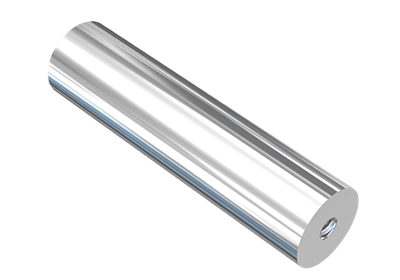What Is a Neodymium Magnet?

A neodymium magnet is a permanent magnet that is classified as a rare earth magnet and consists mainly of neodymium, iron, and boron. The main composition is Nd2Fe14B (Nd: neodymium, Fe: iron, B: boron). It has the strongest magnetic force of any permanent magnet on the market. Its magnetic force reaches 6 to 10 times that of ferrite magnets.
Neodymium, the raw material for a neodymium magnet, is considered to be relatively abundant among rare earths and is inexpensive among rare earth magnets in terms of cost. A decade ago, neodymium magnets were used for industrial applications. However, in recent years, they can be purchased at dollar stores and are also used in ordinary households.
Uses of Neodymium Magnets
Neodymium magnets are used in many situations due to their small size and large magnetic force. Neodymium magnets are used in motors, solenoids, and other power sources, contributing to miniaturization. Neodymium magnets are also used in the magnetic circuits of speakers, which also play a role in miniaturization.
Cell phones and smartphones have built-in speakers, and motors are used to vibrate incoming calls. These devices have become smaller because of the use of neodymium magnets, which are small and have strong magnetic forces.
Motors using neodymium magnets are also used in electric vehicles. They are used in various parts of automobiles, including wheel speed sensors, engine rotation sensors, ignition coils (high-voltage generators for engine ignition), speedometers, and tachometers.
In general households, they are used for hook parts of the type held by magnets, which can hold small but heavy objects. As shown above, they are widely used in fields where smaller and higher-performance products are required.
Characteristics of Neodymium Magnets
The outstandingly strong magnetic force is a characteristic of neodymium magnets. Compared to ferrite magnets, neodymium magnets have more than six times the magnetic force, making them the best among the several types of rare earth magnets.
The mechanical strength of neodymium magnets is relatively strong, and they are resistant to cracking and chipping. However, it is less resistant to heat than other magnets. Heat-induced demagnetization is significant, and the Curie temperature at which the magnet loses its magnetic force is around 300°C. However, neodymium magnets with good temperature characteristics can be produced by adding additives such as terbium or dysprosium. In addition, by refining the crystal grains, neodymium magnets with good temperature characteristics can be produced even with a small amount (or no additives). The practical heat resistance temperature of neodymium magnets is about 60 to 80°C. However, some heat-resistant neodymium magnets that have been processed as described above can be used up to about 200°C.
Another characteristic of neodymium magnets is that they rust easily. Since the magnetic force decreases when the surface rusts, a coating such as nickel plating is usually applied.
Cautions for Handling Neodymium Magnets
Due to its strong magnetic force, it is necessary to consider the effect on the surrounding environment. If neodymium magnets are placed close to a magnetic card or precision instrument, it may have an adverse effect, such as data corruption.
Also, when using multiple neodymium magnets, care must be taken to avoid pinching the skin of the fingers, as the magnets are attracted to each other by a strong magnetic force. When removing attached magnets, slide them in parallel rather than pulling them unnecessarily, so that they can be safely removed with relatively little force. Even though they are very strong, they may chip or crack due to the impact of vigorous adsorption.
Neodymium magnets are susceptible to rust, and even if they are plated, rust can develop under conditions such as moisture.